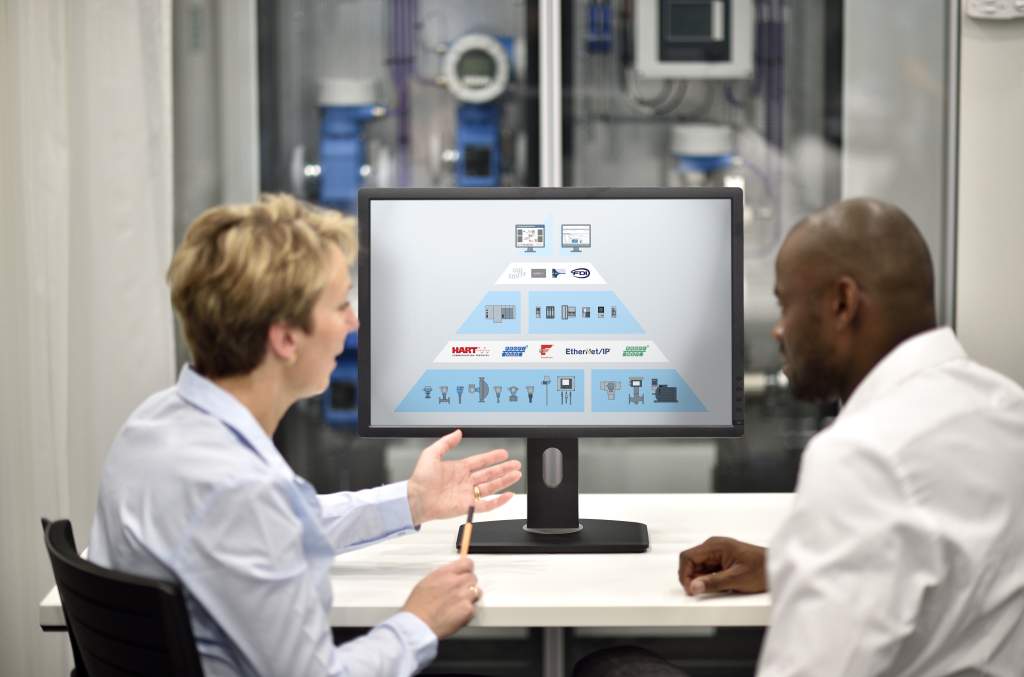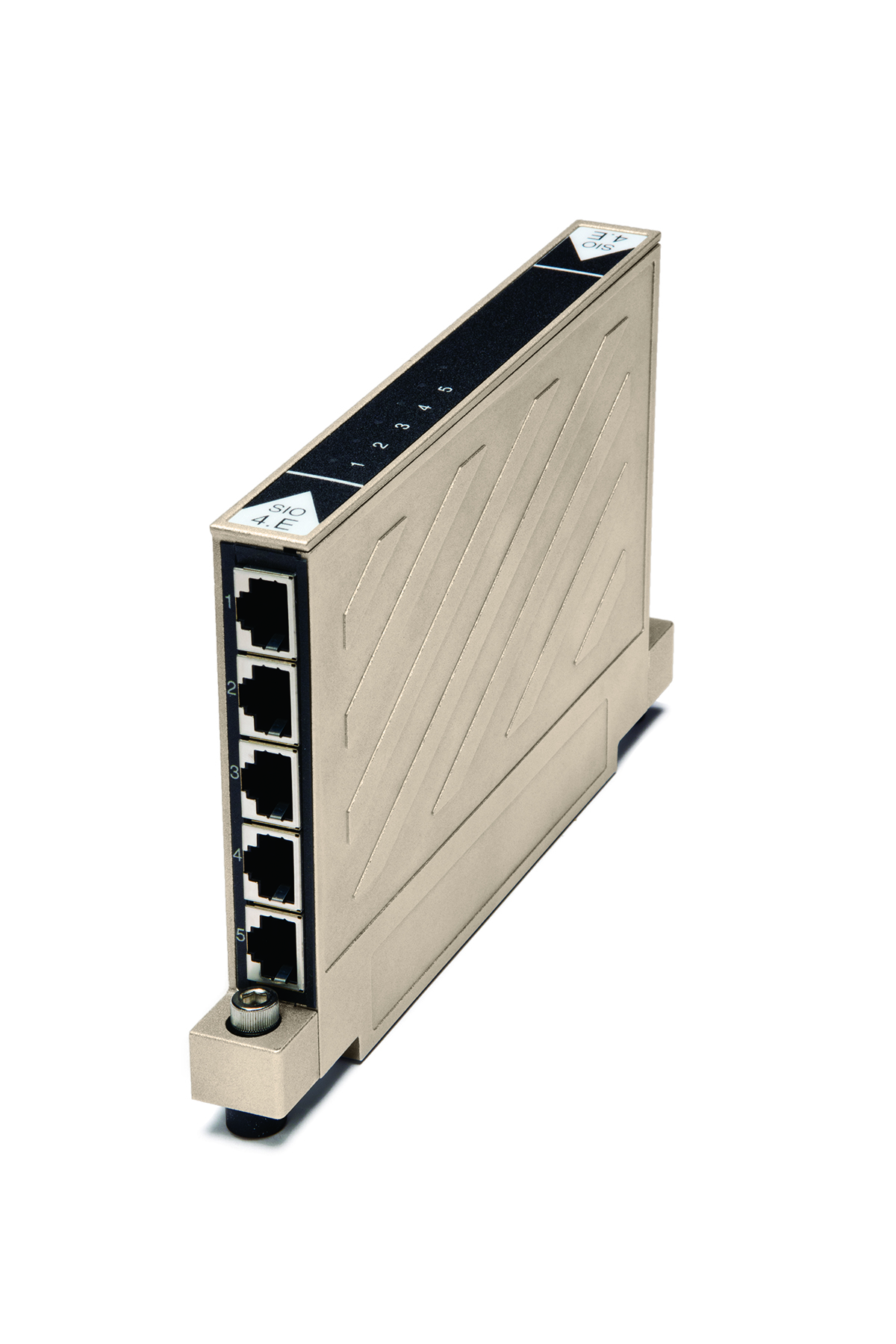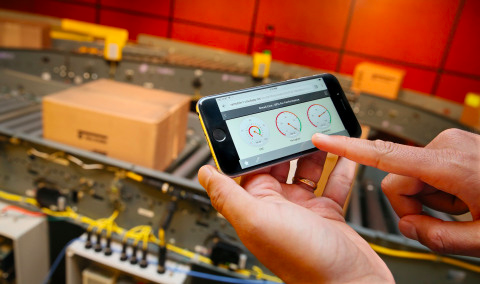
by Gary Mintchell | Dec 2, 2015 | Automation, Interoperability, News, Process Control, Standards, Technology

Here is an industrial automation announcement from the recent SPS IPC Drives trade fair held annually in Nuremberg, Germany. This one discusses a new open integration, some say interoperability, program based upon open standards.
This blog has now complete eight years—through three names and domains: Gary Mintchell’s Radio Weblog, Gary Mintchell’s Feed Forward, and now The Manufacturing Connection. Through these eight years one consistent theme is advocating for what I believe to be the user’s point of view—open integration.
Users have consistently (although unfortunately not always vocally) expressed the view that, while they love developing a strong partnership with preferred suppliers, they also want to be able to connect products from other suppliers as well as protect themselves by leaving an “out” in case of a problem with the current supplier.
The other position contains two points of view. Suppliers say that if they can control all the integration of parts, then they can provide a stronger and more consistent experience. Customers worry that locking themselves into one supplier will enable it to raise prices and that it will also leave them vulnerable to changes in the supplier’s business.
With that as an introduction, this announcement came my way via Endress+Hauser. That company is a strong measurement and instrumentation player as well as a valued partner of Rockwell Automation’s process business. The announcement concerns the “Open Integration Partner Program.”
I’m a little at a loss to describe exactly what this is—other than a “program.” It’s not an organization. Rather its appearance is that of a memorandum of cooperation.
The program promotes the cooperation between providers of industrial automation systems and fieldbus communication. To date, eight companies have joined the program:
AUMA Riester, HIMA Paul Hildebrandt, Honeywell Process Solutions, Mitsubishi Electric, Pepperl+Fuchs, Rockwell Automation, R. STAHL and Schneider Electric.
“By working closely with our partners, we want to make sure that a relevant selection of products can be easily combined and integrated for common target markets,” outlines Michael Ziesemer, Chief Operating Officer of Endress+Hauser. This is done by using open communication standards such as HART, PROFIBUS, FOUNDATION Fieldbus, EtherNet/IP or PROFINET and open integration standards such as FDT, EDD or FDI. Ziesemer continues: “We are open for more cooperation partners. Every market stakeholder who, like us, consistently relies on open standards is invited to join the Open Integration program.”
Reference topologies are the key
Cooperation starts with what are known as reference topologies, which are worked out jointly by the Open Integration partners. Each reference topology is tailored to the customers’ applications and the field communication technologies used in these applications. “To fill the program with life in terms of content, we are going to target specific customers who might be interested in joining us,” added Ziesemer.
Depending on industrial segment and market, the focus will be on typical requirements such as availability, redundancy or explosion protection, followed by the selection of system components and field instruments of practical relevance. This exact combination will then be tested and documented before it is published as a joint recommendation, giving customers concrete and successfully validated suggestions for automating their plant.
Ziesemer adds: “With this joint validation as part of the Open Integration, we go well beyond the established conformity and interoperability tests that we have carried out for many years with all relevant process control systems.”

by Gary Mintchell | Dec 1, 2015 | Automation, Technology
I have been writing on notifications in a personal sense. Here is an application of predictive notifications in manufacturing/production industry from ABB.
A new white paper that shows how predictive maintenance and notification technology can be combined to enable services that predict events that affect production, and then accelerate actions to avoid or exploit the events in order to produce higher equipment availability, more stable process performance and better product quality.

The white paper, entitled, “Are You on Track? How Predictive Notification Keeps Production on Track,” notes that though notifications are all around us (think smart phones with notifications for appointments, social media, software updates, sports scores, stock prices etc.), they haven’t yet entered the realm of industrial production. The paper proposes that the reason is because most notifications tell what has already happened. But combining notification technology with predictive maintenance technology can create a solution in which notifications become part of the daily industrial plant work practice.
“We have long provided control technology that triggers alarms for certain scenarios,” said Dan Duncan, Vice President, Sales and Operations for ABB Process Automation Service. “And we also deliver services that can automatically identify, categorize and prioritize maintenance issues that should be addressed. Both of these technological developments have made a huge impact on global industrial production.
“But what has been missing from our toolset is a simple way to take what is identified, categorized and prioritized by these advanced services technologies, and quickly and efficiently put an action into the hands of someone who can actually do something about it now,” Duncan said. “This white paper represents our thinking on how this can be accomplished by industrial producers everywhere.
“We expect it to have a significant beneficial effect on improving production efficiencies,” he said.
The paper covers predictive maintenance technology, problems with historical predictive approach and how to resolve those problems. The paper further identifies the value that can be produced by predictive notification technologies, and outlines a path to implementing a predictive notification program, including step-by-step guidance on how to get there.

by Gary Mintchell | Nov 25, 2015 | Automation, Security, Technology
 Bedrock Automation extends to the industrial Ethernet domain its commitment to deliver “Simple, Scalable and Secure” automation. The SIO4.E Ethernet I/O module plugs into the Bedrock pinless electromagnetic backplane to receive Bedrock’s patented Black Fabric cyber security protection.
Bedrock Automation extends to the industrial Ethernet domain its commitment to deliver “Simple, Scalable and Secure” automation. The SIO4.E Ethernet I/O module plugs into the Bedrock pinless electromagnetic backplane to receive Bedrock’s patented Black Fabric cyber security protection.
Each of the module’s five I/O channels is independently software configurable. The initial library of Ethernet protocols includes EtherNet/IP. Modbus TCP, OPC UA, and Profinet are slated for future releases on firmware updates. All channels also deliver Power over Ethernet (PoE).
Ethernet as a real-time control variable
Tightly coupling Ethernet into the process control and I/O network enables deployment of a wide range of edge device and enterprise data into real-time control logic, much in the same way an engineer incorporates more typical process sensor and actuator data. This results in real-time communication channels for the exchange of data between OT production and IT enterprise systems.
“Unlike an Ethernet switch traditionally sitting at Purdue levels 3 to 5 with the operations and business networks, the SIO4.E module delivers Ethernet as secure I/O at levels 0 and 1 with the sensor, actuator and process control logic. This collapses the legacy hierarchical ICS model into a simplified and inherently more secure automation architecture. Equally empowering is the deployment of OPC UA on any of the SIO4.E Ethernet I/O channels, opening up a world of opportunity and innovation while reducing all aspects of software lifecycle cost. This is the way of the future,” says Bedrock CTO and Engineering VP, Albert Rooyakkers.
Securing Ethernet I/O
Ethernet is becoming widely adopted for open industrial control system (ICS) applications because it builds on proven, high-speed stacks that have been enhanced for use on industrial devices such as robots, PLCs, sensors, CNCs and other industrial machines. Bedrock secures Ethernet I/O in many ways, including by connecting the FIPS compliant anti-tamper SIO4.E I/O module on a pinless electromagnetic backplane, embedding authentication logic, true random number generation (TRNG) and cryptographic keys into the semiconductor hardware, and by isolating information flow within each channel by way of separation kernel functionality in a secure real-time operating system (RTOS).
“Robust ICS cyber security is just part of the tremendous value that the new Bedrock module brings to process automation,” says Bedrock Automation President Bob Honor. “The fact that each channel can be software configured adds new levels of flexibility and scalability. No other I/O module allows process engineers to program so much communications capability into one system component. We are especially excited about the positive impact for ICS users. That user experience is increasingly configurable and Bedrock uniquely offers the tools and platform to shape it securely to their advantage.”
Pricing and availability
The Bedrock SIO4.E Ethernet I/O module is available at a price of $2000, about the same as a traditional Ethernet IP card. But unlike a typical Ethernet card, the five channel SIO4.E is cyber secure, software configurable for multiple protocols, and has more bandwidth, higher computing power and additional performance advantages.

by Gary Mintchell | Nov 24, 2015 | Marketing
 Rebecca Geier was the first marketing person I met at National Instruments in my first year after leaving manufacturing for media. She has remained a friend whom I respect.
Rebecca Geier was the first marketing person I met at National Instruments in my first year after leaving manufacturing for media. She has remained a friend whom I respect.
A few years ago she left NI and founded TREW Marketing–an agency specializing in helping clients develop and execute marketing projects to an engineering customer.
She has written a book Smart Marketing for Engineers: An Inbound Guide to Reaching Technical Audiences which launches in mid-December on Amazon. She explains the book in a recent blog post.
She sent an early copy of the book to read and review. This is a comprehensive guide to the latest thinking of inbound marketing. It will help you understand the marketing landscape and also understand the unique ways to engage engineers.
Marketing To Technically Minded Audiences
Geier states on her blog, “I have seen firsthand that marketing to technically minded audiences does in fact work, but it has to be as smart as the people it targets. For small engineering and scientific businesses with limited resources or business and sales leaders wearing multiple hats, it’s difficult to even know where to start. And you’re skeptical that the new inbound approach to marketing will even work with your technical audiences.”
Here are three keys to understand the challenge.
“I wrote this book for you. Three points led me to decide to write this book:
- Engineers are smart, so our marketing needs to be equally smart, and trustworthy
- Buyers are in control…they decide when, where and what they will search on and do it mostly on Google
- Marketers now have the challenge and opportunity to get found when our target engineering audiences are searching”
If you are a company CEO or marketing director, do yourself a favor and not only buy the book, but digest its message.

by Gary Mintchell | Nov 23, 2015 | Automation, Manufacturing IT, News, Operations Management
I spent more time and took far more notes at the Operational Intelligence stand on my tour of Rockwell Automation’s annual fete, Automation Fair, than any other–even Integrated Architecture which I reported last week.
One reason was a press release that I received regarding a “co-invention” between Rockwell Automation and Microsoft on a mobility solution. This will become a great enabler of the Connected Enterprise according to the release. Unfortunately, when I studied the release, I couldn’t figure out what “it” was. Probably too many companies and too many marketing managers trying to get their two cents in resulting in too many nice-sounding but vague words 😉
Thanks to Ryan Cahalane, director of software product management, and others, I came away with enough of an understanding to see how potentially valuable this project could be.
Mobility
 Let’s start with mobile devices. Workers at all levels are bringing them to work whether IT is ready or not. When you own one, you want to use it. So, why not leverage commercial technologies developed by Microsoft (its Project Thali) with industrial application and robustness from Rockwell (Project Stanton).
Let’s start with mobile devices. Workers at all levels are bringing them to work whether IT is ready or not. When you own one, you want to use it. So, why not leverage commercial technologies developed by Microsoft (its Project Thali) with industrial application and robustness from Rockwell (Project Stanton).
Rockwell is making extensive use of HTML 5. But this toolkit in development includes a technology called JXcore from Nubisa. JXcore is a Node distribution. It is designed for developing applications for mobile and embedded devices using JavaScript and leveraging the Node ecosystem. Use the same codebase for server and mobile applications.
The toolkit enables Rockwell Automation offerings with a consistent web-based user interface for a specific device; tablet, smartphone or desktop and now includes a prototype app, dubbed Project Stanton (@Project_Stanton).
Operational Intelligence From Logix
 The second technology I wish to discuss is the latest release of FactoryTalk VantagePoint 7.0. Rockwell Automation says, “For manufacturers, making swift use of big data just got easier. The addition of import and configure mobile-based work flows in the FactoryTalk VantagePoint enterprise manufacturing intelligence (EMI) v7.0 software enables the one-time configuration of a manufacturing intelligence solution.”
The second technology I wish to discuss is the latest release of FactoryTalk VantagePoint 7.0. Rockwell Automation says, “For manufacturers, making swift use of big data just got easier. The addition of import and configure mobile-based work flows in the FactoryTalk VantagePoint enterprise manufacturing intelligence (EMI) v7.0 software enables the one-time configuration of a manufacturing intelligence solution.”
This software provides users a seamless way to access their Logix-based data by providing a simple, guided work flow to store and visualize information. Everything from installation, configuration and visualization has been enhanced and consolidated – so users can interact with their Logix-based control data from their device of choice: PC, tablet or smartphone. To promote intelligent decision-making, the new work flows enable authorized users to store and visualize specific data views and trends, and easily share these views with collaborators across the enterprise.
“The FactoryTalk VantagePoint experience now provides access to manufacturing information faster than ever,” said Angela Rapko, product manager, EMI Software Portfolio, Rockwell Automation. “For users, this more cohesive and intuitive experience is a significant step forward. The less time operators spend configuring systems, the more they can focus on how their plants are actually functioning. We have truly reduced the time to trend data with this release.”
Additionally, FactoryTalk VantagePoint software will now silently install with FactoryTalk Historian SE software from Rockwell Automation. Upon completion, the user will be greeted with a VantagePoint mobile Web page, including the new import and configure options.
From any PC or tablet, a user can browse through the FactoryTalk Directory server to an online controller; select the tags from which they aim to collect associated data; and configure scan rates and additional historian parameters. Once this process is complete, the selected tags are stored in the FactoryTalk Historian solution and automatically configured for the FactoryTalk VantagePoint software. By simultaneously configuring tags, a user within the VantagePoint mobile work flow makes a few simple selections in order to begin collecting data, and creating dashboards and trends.
Also new, FactoryTalk VantagePoint v7.0 software offers SQL Server Express with install. This removes complex licensing options from the install process.















